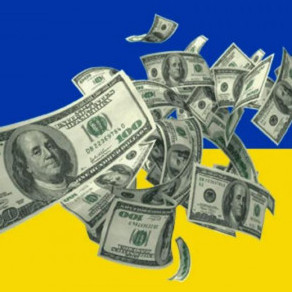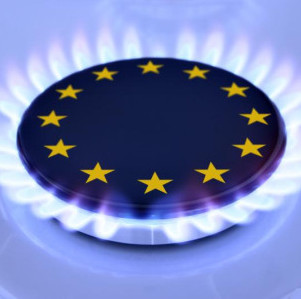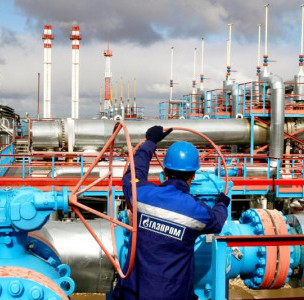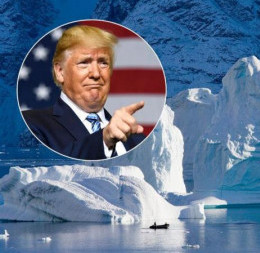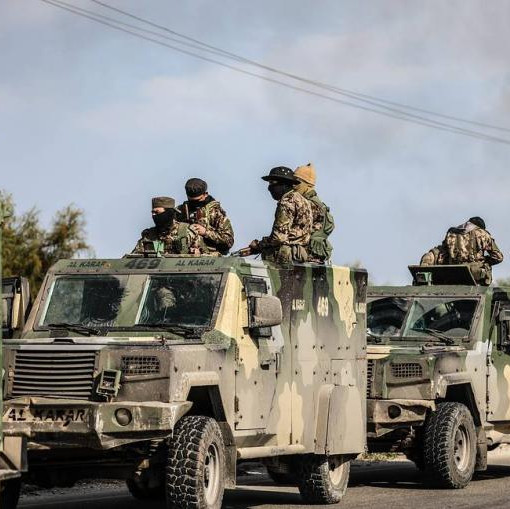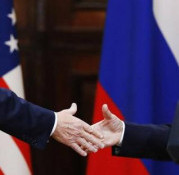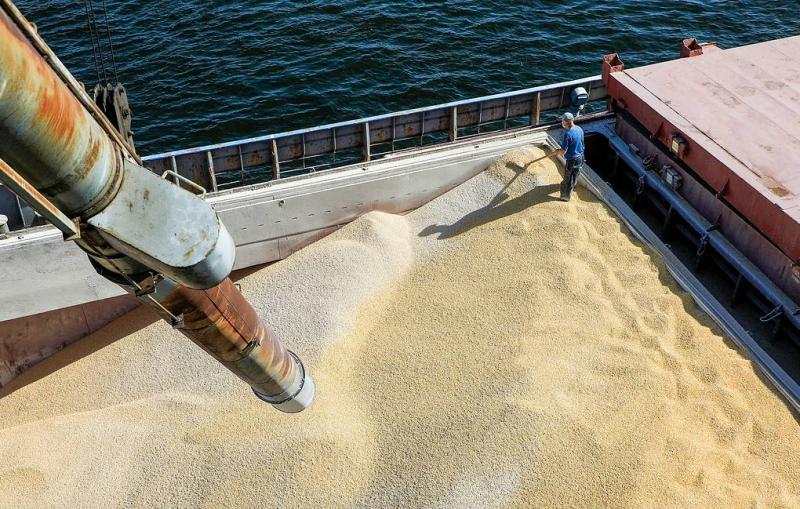
Ukraine is questioning the terms of the Black Sea Initiative and demanding more financial aid from Europe; Russia has expressed willingness to strategic stability talks with the US with the New START Treaty set to expire; and the US reasserts that China remains Washington’s primary strategic rival. These stories topped Thursday’s newspaper headlines across Russia, according to TASS News Agency.
Vladimir Zelensky has questioned Moscow’s condition for lifting sanctions on Russian agricultural exports and fertilizers - a term previously agreed upon during consultations between Russian and US representatives in Riyadh. He also criticized the moratorium on strikes against energy infrastructure, announced by Moscow on March 18, despite having initially endorsed the decision. Meanwhile, other Kiev representatives have begun presenting additional demands that were not originally included in the Black Sea Initiative, seemingly in the hope that these new ideas would also contribute to its disruption, Nezavisimaya Gazeta writes.
Before his visit to Paris on Wednesday - where discussions within the framework of the so-called "coalition of the willing" were expected to focus on continued military and financial support for Kiev - Zelensky said that Ukraine’s treasury lacks the necessary funds to sustain the Ukrainian Forces of Ukraine and that Europe must cover these expenses, implicitly emphasizing that military expenditures remain even higher during a ceasefire than in active combat conditions.
The final Riyadh communique states that Moscow and Washington have agreed to develop measures for implementing the agreement prohibiting attacks on energy infrastructure in both Russia and Ukraine. This interpretation varies from the Kremlin’s account, which asserted that Moscow and Washington had approved a specific list of Russian and Ukrainian energy facilities that were to be exempt from strikes under the 30-day moratorium effective from March 18. The two sides also differed in their approaches to the Black Sea Initiative - the US version emphasized Washington’s willingness to facilitate the lifting of restrictions on Russian food and fertilizer exports, whereas the Russian stance made the removal of these sanctions a condition for the agreement’s implementation.
Naturally, Kiev quickly seized upon these discrepancies, Nezavisimaya Gazeta writes. In his latest video address, Zelensky accused Moscow of attempting to "distort the agreements."
The apparent divergences in interpretation likely stem from the fact that Russian and US representatives have not yet reached a full consensus on several issues, senior research fellow at the Institute for International Studies at MGIMO Nikolay Silaev told Nezavisimaya Gazeta. He noted that Moscow’s communique largely reiterated the commitments made to Russia under the first Black Sea Initiative - commitments that were ultimately never fulfilled.
The expert added that the list of energy facilities presented by the Russian side, temporarily excluded from its target list shows Moscow’s goodwill. "We have reaffirmed our commitment to the moratorium. However, Kiev has yet to respond adequately. It appears that Washington is currently unable to persuade Kiev to honor the agreements reached," he said, adding that Russia is unlikely to act hastily in this regard, as the necessary military objectives were evidently achieved before March 18.
Kommersant: Russia open to dialogue on strategic stability as New START Treaty nears expiration
Russian Foreign Minister Sergey Lavrov has emphasized the importance of resuming dialogue with the United States on strategic stability. During the previous US administration, the two sides failed to reach an agreement on this issue. Now, as Lavrov’s remarks suggest, the conditions for negotiations with the new White House team remain undefined. Meanwhile, in less than a year, the crucial bilateral Strategic Arms Reduction Treaty (New START) is poised to expire. Should Moscow and Washington fail to agree on alternative measures, the world’s two largest nuclear powers will find themselves - for the first time in half a century - without any formal arms control agreements, Kommersant reports.
Prior to February 2022, Moscow and Washington had been engaged in discussions on potential arrangements to replace New START. However, amid the conflict surrounding Ukraine, the US unilaterally suspended these discussions. With Donald Trump’s return to power in the United States, there are emerging signs that the situation could improve.
If Moscow and Washington fail to negotiate new agreements to supersede New START, they will be left without any restrictions on strategic arms for the first time since the 1970s.
Prokhor Tebin, Director of the Center for Military-Economic Studies at the Institute of Global Military Economy and Strategy at the Higher School of Economics, expressed doubt in an interview with Kommersant about the feasibility of launching multilateral consultations before New START expires.
"This is unrealistic, primarily due to the policies of London and Paris, as well as their relations with both Russia and the Trump administration. However, the situation could evolve over time," the expert noted.
However, he did not rule out the possibility that Moscow and Washington could facilitate informal dialogue or intermediary consultations between each other and China, France, and the United Kingdom - potentially through backchannel diplomacy. "In my view, while the likelihood of China engaging in such discussions remains low, it is still higher than that of France and the United Kingdom - particularly given Europe’s current push for ‘strategic autonomy’ and efforts to substitute or even replace the American ‘nuclear umbrella,’" Tebin concluded.
Izvestia: China remains US primary threat and rival
Senior representatives of the US intelligence community briefed the Senate on global threats, outlining challenges posed by both state and non-state actors. The report places particular emphasis on the geopolitical confrontation between Washington, Moscow, and Beijing, as well as the growing cooperation between Russia and China and their respective ties with Iran and North Korea. Beijing remains Washington’s leading strategic adversary, with US officials voicing concerns over China’s military expansion, particularly in the event of a conflict over Taiwan. The report also highlighted Russia’s resilience, stating that Moscow has recently shown both economic and military stability.
US intelligence officials identified Russia as a significant contender, citing its recent sustained military and economic strength, as well as considerable capabilities in AI and cyberspace. Nevertheless, the primary focus of the briefing was US-China rivalry. According to the report, China poses the most formidable and comprehensive threat to US national security. Beyond military concerns, Beijing aspires to surpass the United States as the world’s leading economic power. However, Washington acknowledged that China, under Donald Trump’s administration, is inclined to maintain and cultivate relations with the US to prevent conflict while advancing its own interests.
Andrey Kortunov, Scientific Director of the Russian International Affairs Council, told Izvestia that it is crucial to examine specific aspects of the bilateral relationship. "There is room for potential agreements in certain areas. I believe Trump may genuinely be interested in negotiating a mutually acceptable trade deal, given that Chinese exports to the US are substantial. A sudden Chinese exit from the American market would have serious negative consequences for US consumers," the analyst said.
At the same time, he argued that the US is unlikely to restore cooperation with China in strategically sensitive fields such as AI, advanced microprocessors, quantum computing, and other cutting-edge technologies.
Vasily Kashin, Director of the Center for Comprehensive European and International Studies at the Higher School of Economics, told Izvestia that the US administration has already launched an economic war against China.
"Trump initially imposed a 10% tariff on Chinese goods, later raising it to 20%. Further escalation of tensions remains a possibility, with both sides in an asymmetrical position: the US finds it easier to hit China with tariffs, while Beijing has fewer retaliatory options due to the significant trade imbalance - Chinese exports to the US far exceed American exports to China," he explained.
However, Kashin believes that China undoubtedly has a well-calculated strategy to counteract the US government’s tariff measures.
Kommersant: Copper prices hit record highs amid speculation over new US tariffs
Copper prices are surging to new highs following reports that the United States may impose import tariffs on the metal within the next few weeks. This development is adding further uncertainty to global trade flows, causing copper to trade at a premium of over $1,000 in both the US and China, Kommersant reports. Imports account for approximately 30% of the US copper supply, and with the country lacking sufficient refining capacity, traders are rushing to stockpile the metal.
On March 25, three-month copper contracts on the London Metal Exchange (LME) jumped by 1.57% to $10,110 per ton, marking their highest level since the summer of 2024. Meanwhile, on March 26, May futures on the Chicago Mercantile Exchange (CME) rose by 0.4% to $11,530 per ton, setting a new all-time high.
The escalation of trade wars is injecting significant uncertainty into global trade flows, leading to a premium of over $1,000 per ton in both the US and China, analyst at BCS World of Investments Ahmed Aliyev told the newspaper. Given the US’s heavy reliance on copper imports, the market reaction to potential tariffs is understandable, he explains.
"The US imports a significant portion of its copper, about 30%, from Chile, Canada, and Peru. However, the country has very limited smelting capacity, with only two operational refineries. As a result, the US primarily relies on imported refined copper rather than concentrate, highlighting an evident processing bottleneck," industry sources told Kommersant.
According to estimates from investment company Ricom-Trust, copper prices could increase to $12,000-$12,500 per ton in the near term. By 2035-2040, prices may surge to $17,000-$20,000 per ton due to an anticipated supply deficit. Mikhail Abelev, an expert at the company, explained that "exploration and the development of new copper deposits are progressing at a much slower pace than the growing demand for the metal."
In the short term, rising copper prices may benefit Russian producers. However, much of these gains could be offset by the strengthening ruble, Aliyev pointed out.
Izvestia: Strong ruble might cost Russian budget nearly $23.85 bln
A stronger ruble could result in a nearly 2 trillion-ruble ($23.85 bln) deficit for the Russian budget, according to experts surveyed by Izvestia. This outcome will unfold if the exchange rate remains at its current levels. The reason lies in the direct correlation between the ruble’s value and oil and gas revenues. The government’s financial plan for this year is based on an exchange rate of 96.5 rubles per dollar. However, since the beginning of 2025, amid ongoing negotiations between Russia and the US, the Russian currency has strengthened by almost 20%, bringing the dollar’s value down to 84 rubles. A decrease of just 1 ruble in the average annual exchange rate translates into a revenue loss of approximately 100-160 bln rubles ($1.19-1.9 bln) for the national budget.
Olga Belenkaya, Head of the Macroeconomic Analysis Department at Finam, explained that if the average price of Urals crude oil remains around $60 per barrel and the exchange rate hovers near 85 rubles per dollar through the end of the year, the shortfall in oil and gas revenues could exceed 2 trillion rubles ($23.85 bln).
For years, geopolitical risks have been embedded in the ruble’s valuation, affecting investments in the Russian economy, stock market analyst at BCS World of Investments Mikhail Zeltser told the newspaper. Recently, this risk discount has narrowed, as improving Russia-US relations and a potential de-escalation of the Ukrainian conflict have strengthened both the economy and Russia’s international position.
The ruble may weaken to 85 per dollar as early as Q2, according to BCS World of Investments. A decline in revenue from Russian exports of goods and services will put pressure on the currency.
However, the strengthening trend is unlikely to last long, according to analysts at Tsifra Broker. Russian exports are expected to recover following a seasonal slowdown in January-February, which will increase capital outflows. Additionally, Brent crude oil prices have fallen by more than 10% since the start of the year, while Russian hydrocarbons continue to trade at a discount, further weighing on exporters’ revenues. Experts at the company anticipate that the ruble will soon resume its trajectory toward 90 rubles per dollar.
TASS is not responsible for the material quoted in these press reviews

